How Proposal Software Can Reduce Sales Cycle Length
Learn how proposal software can streamline your sales process, shorten sales cycles, and drive better results.
— Propoze
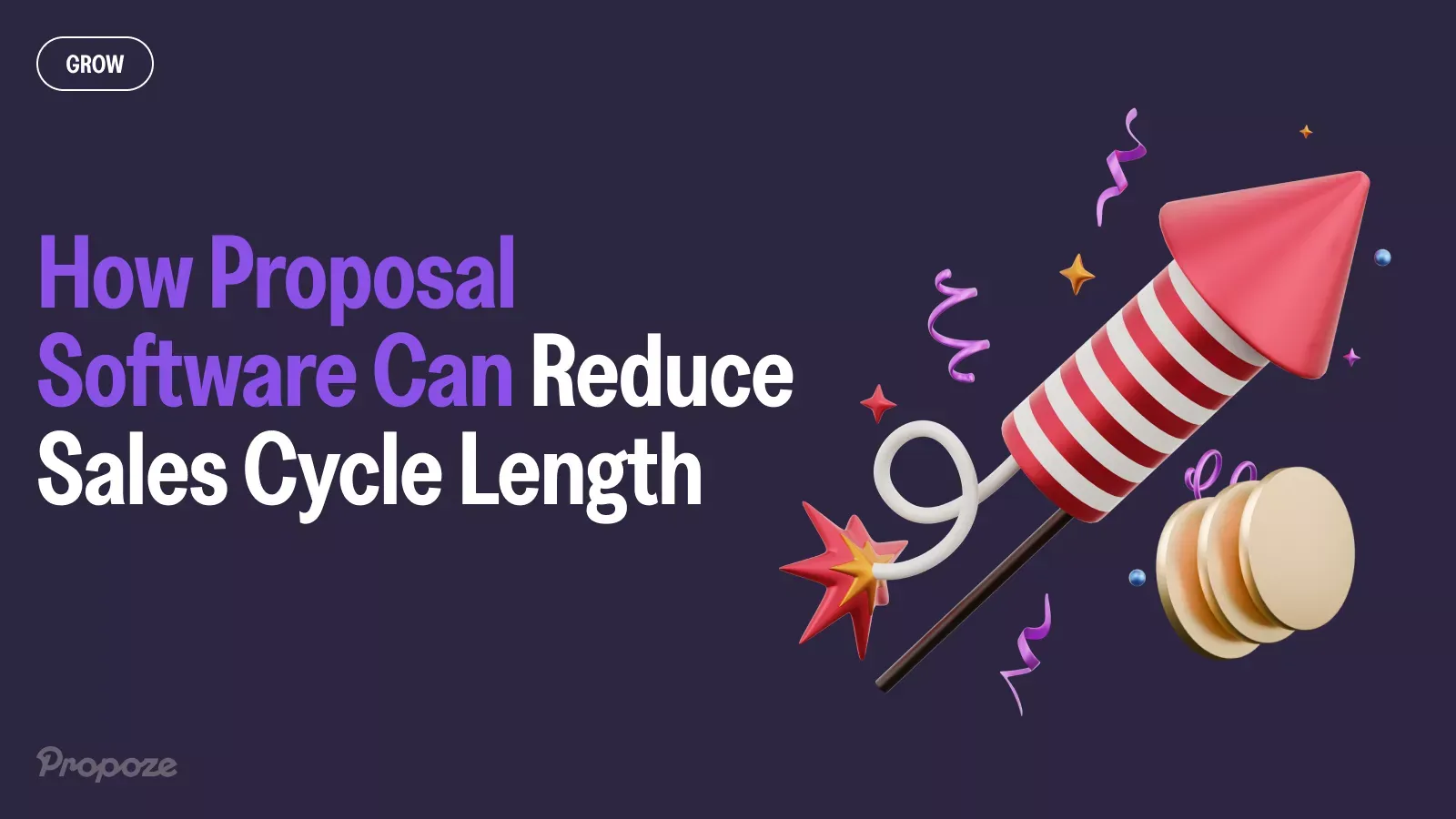
Reducing the length of your sales cycle can be a game-changer in closing deals faster and improving your bottom line.
With the right proposal software, you can streamline your sales process, eliminate bottlenecks, and make quicker, data-driven decisions.
In this post, we’ll explore how proposal software can significantly reduce sales cycle length, giving your team the tools they need to work more efficiently and close deals faster.
Understanding the sales cycle: What are the key stages and challenges?
The sales cycle is the journey that a prospect goes through from initial contact to closing a deal. It typically consists of 4 key stages — prospecting, qualifying, proposing, and closing.
Each stage presents its own challenges, such as identifying qualified leads, creating compelling proposals, and handling objections.
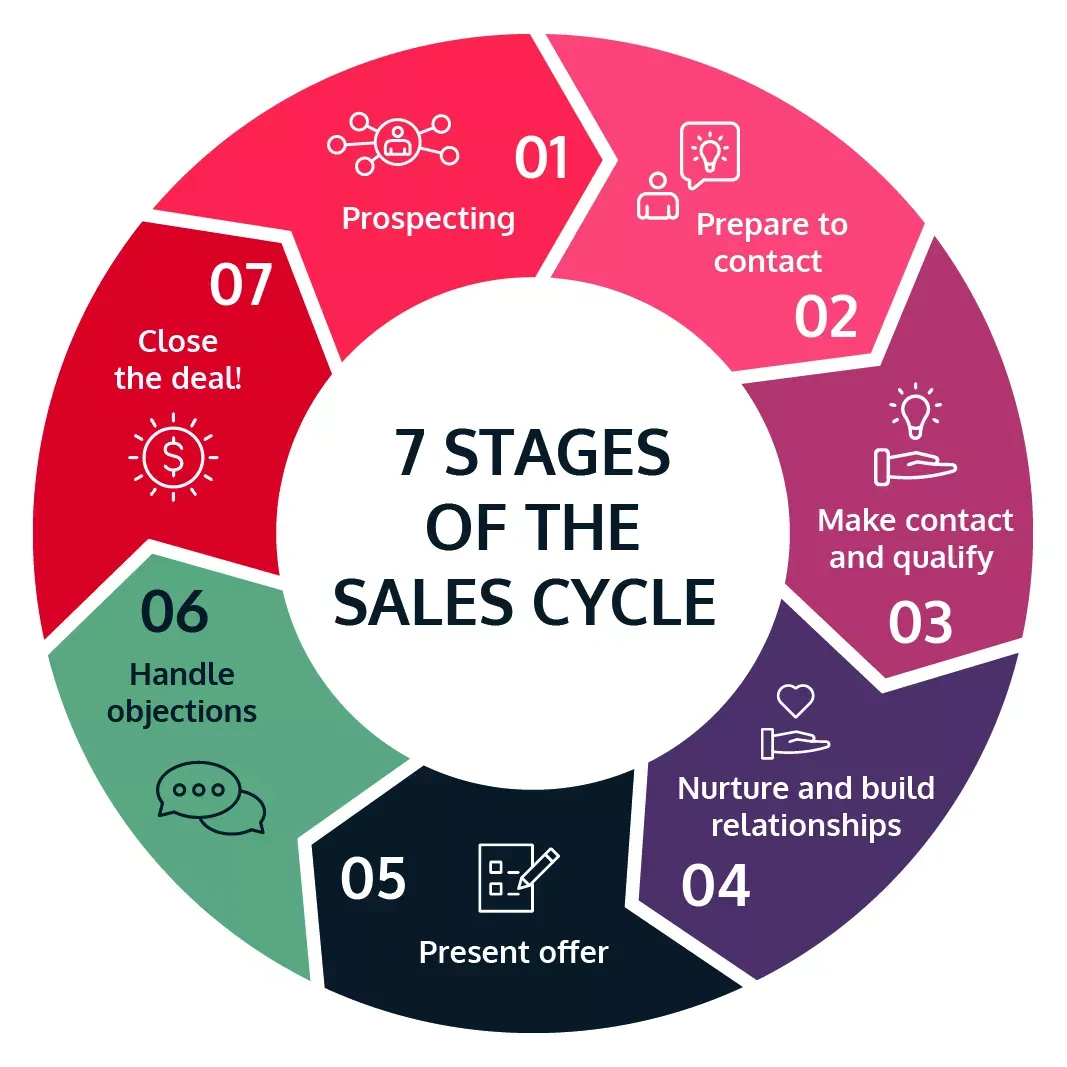
Bottlenecks often occur when there’s a lack of alignment between sales and marketing, inefficient communication, or delays in proposal creation. Understanding these stages and the associated challenges is crucial for identifying opportunities to streamline the process and reduce the overall sales cycle length.
Read our guide to increasing sales efficiency and shortening sales cycle length
What are the common bottlenecks in the sales process?
Even the most well-planned sales processes can encounter bottlenecks that slow down the journey from prospect to close. Some of the most common issues include:
- Delayed response times: Slow follow-ups can cause potential clients to lose interest or move forward with a competitor.
- Inefficient proposal creation: Creating and customizing proposals manually can be time-consuming, leading to delays.
- Poor communication: Misalignment between sales teams and other departments can result in missed opportunities or unclear messaging.
- Complex approval processes: Lengthy internal approval processes can drag out the sales cycle, frustrating both the sales team and the client.
Identifying and addressing these bottlenecks is essential to streamlining your sales process and reducing the overall cycle length.
What is the role of proposal software in streamlining your sales process?
Proposal software plays a crucial role in making each stage of the sales process more efficient and effective:
- Prospecting: Automates data collection and client insights, helping you quickly identify qualified leads.
- Qualifying: Integrates with CRM systems to ensure that leads are accurately scored and prioritized based on their readiness to buy.
- Proposing: Simplifies the creation and customization of proposals with templates, ensuring consistency and speed.
- Closing: Facilitates quicker approvals and e-signatures, reducing the time it takes to finalize deals.
By streamlining these stages, proposal software helps reduce delays and accelerates the entire sales cycle.
Looking for proposal software? Here's our handpicked list of 7 best proposal software on the market!
Use automation to accelerate your proposal process
Automation can drastically speed up how you create and manage proposals. Here’s how you can make the most of it:
- Save time with templates: Use pre-built templates to quickly generate proposals, cutting down on repetitive tasks.
- Stay on track with follow-ups: Set automated reminders and emails to ensure timely communication without extra effort.
- Speed up approvals: Implement automated workflows to reduce delays in getting necessary approvals.
- Collaborate in real-time: Allow your team to work together on proposals simultaneously, enhancing both speed and accuracy.
For even better results, regularly update your templates and integrate your proposal software with your CRM. This helps keep your data accurate and ensures your proposals are always relevant. Monitoring metrics like response times and win rates can also highlight areas for improvement.
With these strategies, your team will close deals faster and more efficiently.

Automate your follow-ups and client communication
Automating follow-ups and client communication is key to keeping the sales process moving smoothly. Proposal software can automatically send reminders and follow-up emails, ensuring that no potential client is left waiting.
You can set triggers for these follow-ups based on specific actions, such as when a proposal is viewed or a certain amount of time passes without a response. This approach keeps the conversation going without requiring manual effort.
Automated communication also helps maintain consistency in your messaging, reducing the risk of missed opportunities and keeping clients engaged throughout the sales cycle.
Reduce the amount of administrative work with proposal software
Proposal software significantly cuts down on administrative tasks, allowing your sales team to focus on selling rather than paperwork.
With features like automated document generation, data entry, and template management, the software handles routine tasks that usually consume valuable time. This automation reduces the likelihood of errors and ensures that all necessary information is included in each proposal. It also simplifies version control, keeping everything organized and accessible.
With administrative work minimized, your team can spend more time building relationships with clients and closing deals faster.
Integrate proposal software with CRM for faster decision-making
Integrating proposal software with your CRM system streamlines data flow and speeds up decision-making.
When your CRM and proposal software work together, all client information is in one place, reducing the need for manual data entry.
This integration allows your sales team to quickly access relevant client data, such as previous interactions, preferences, and history, making it easier to tailor proposals. Real-time updates ensure that everyone is on the same page, enabling faster responses and more informed decisions, ultimately leading to quicker deal closures and improved efficiency.
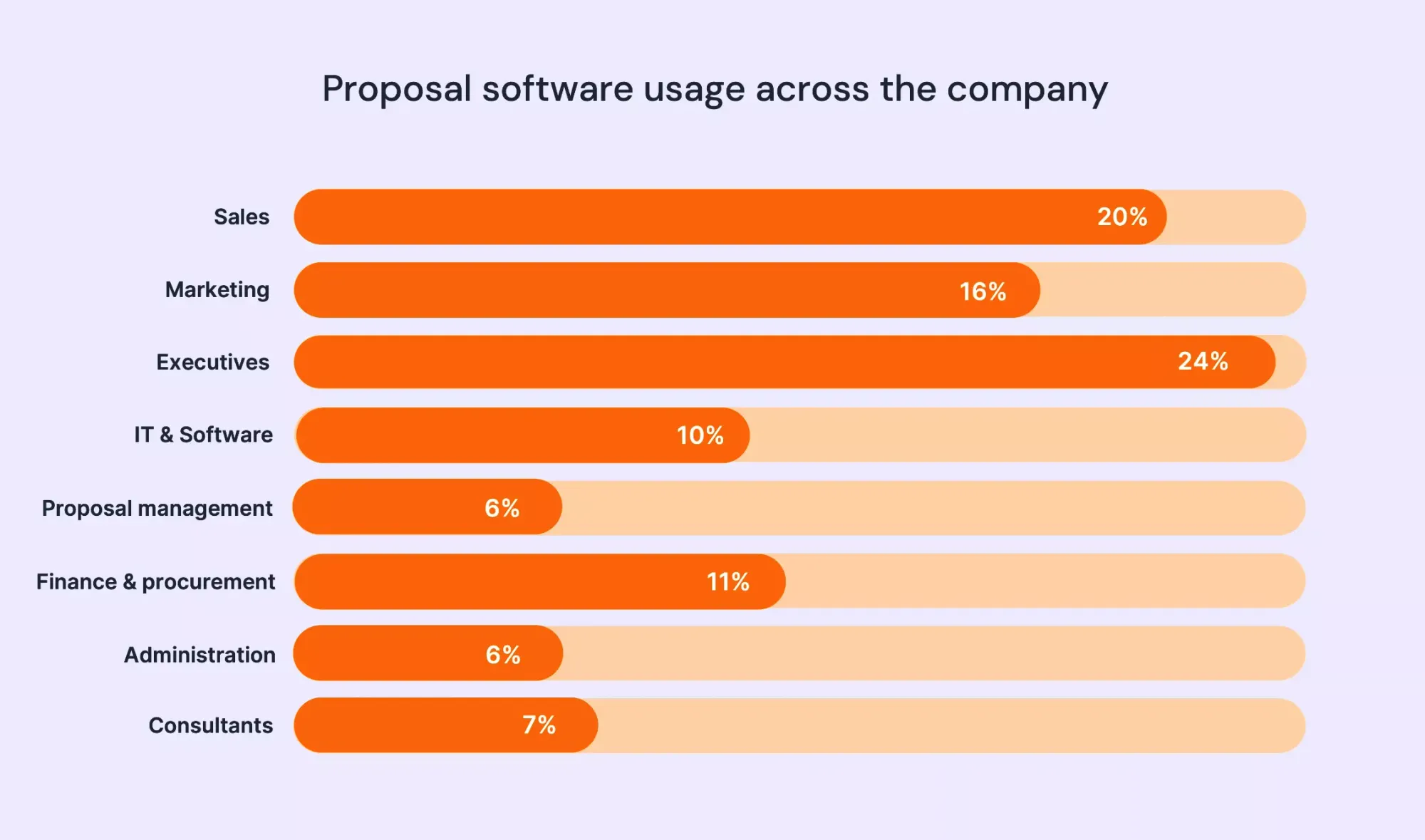
And in the image above, you can see that the use of proposal software is quite widespread across companies and their departments.
As expected, mostly marketing, sales, and executive management seems to work with such tools.
What are the benefits of seamless data flow between CRM and proposal software?
Seamless data flow between systems is crucial for a well-oiled sales process. When your proposal software integrates with tools like CRM and project management systems, several key benefits emerge:
- Eliminate data silos: With integrated systems, data flows freely between platforms, ensuring that everyone has access to the same information. This reduces miscommunication and keeps all teams aligned.
- Improve decision-making: Access to real-time, accurate data across systems allows your team to make informed decisions quickly. For example, sales reps can see the latest client interactions directly within the proposal software, enabling them to tailor proposals more effectively.
- Enhance efficiency: Automating data transfer between systems cuts down on manual data entry, reducing the risk of errors and freeing up time for more strategic tasks. This streamlines the workflow, speeding up the sales cycle.
- Increase collaboration: Seamless data flow ensures that marketing, sales, and customer service teams can collaborate more effectively. When everyone has access to the same up-to-date information, they can work together to close deals faster and with greater accuracy.
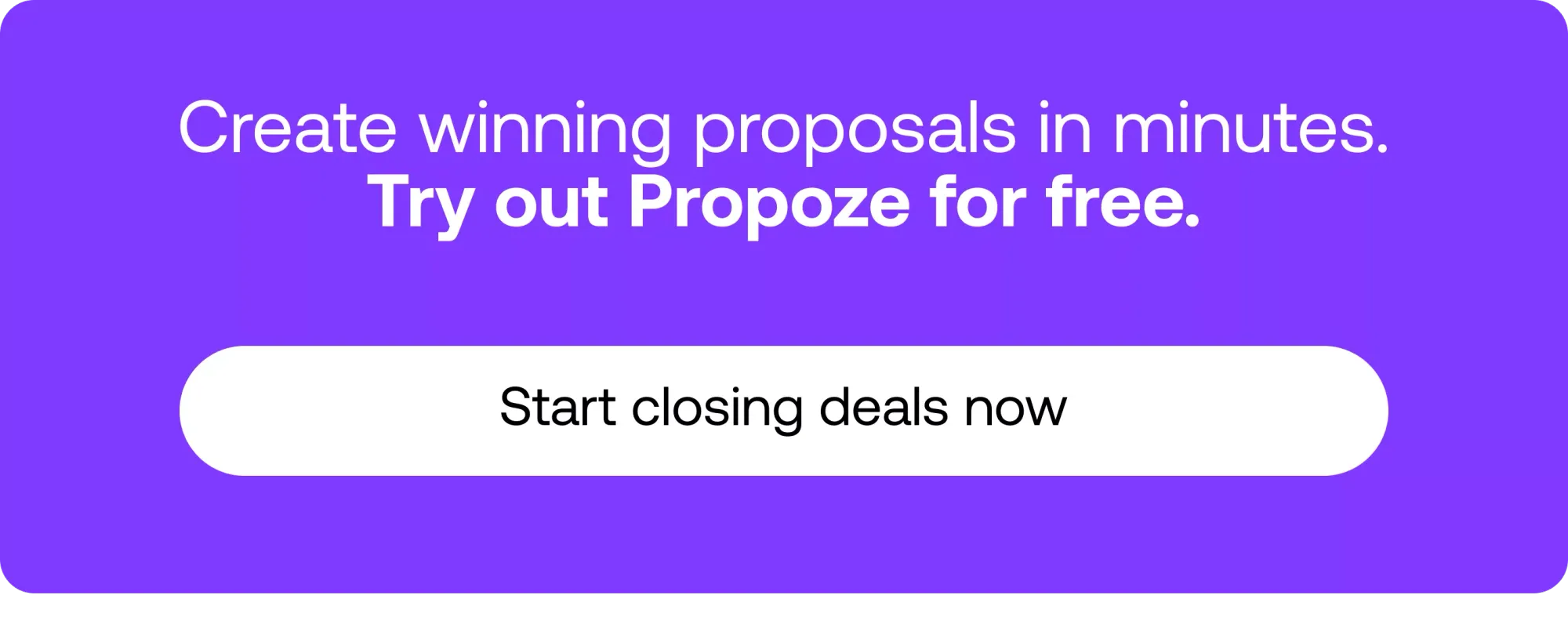
Improve collaboration and accuracy with proposal tools
Proposal software greatly improves collaboration and accuracy within your sales team. By allowing multiple team members to work on a proposal simultaneously, you eliminate the delays caused by waiting for edits or approvals. Built-in collaboration tools, such as real-time commenting and version tracking, keep everyone aligned and reduce errors.
These features ensure that all team members can contribute their expertise while maintaining a consistent, polished final proposal. Additionally, proposal software integrates client data seamlessly, reducing manual entry errors and ensuring accuracy across all touchpoints. This leads to faster proposals and higher-quality results.
Proposal software makes teamwork smoother and ensures accuracy. Here’s how:
Real-time collaboration
Teams can work on the same proposal at the same time. This means less waiting and more teamwork. Everyone can see updates instantly, so there’s no confusion.
Centralized resources
All templates and data are in one place. This ensures everyone uses the correct, most recent information. It’s easier to find what you need without searching through multiple files.
Automatic change tracking
The software tracks every change automatically. You always know who made updates and what those updates were. This keeps everyone on the same page.
Role-based access
You can control who can edit or view certain parts of the proposal. This keeps sensitive information secure while allowing the right people to collaborate.
CRM integration
Syncing with your CRM pulls in the latest client info. This ensures proposals are accurate and tailored to the client’s current situation.
Collaboration insights
Some software gives feedback on how well teams work together. This can help identify and fix any bottlenecks, making future projects smoother.
These tools not only make the proposal process faster but also ensure higher-quality work. The result? Better proposals and more closed deals.
How proposal software helps your team work better together
Proposal software includes features designed to boost team efficiency:
- Shared workspaces: Teams can work together in shared spaces where everyone can access and contribute to proposals. This reduces the need for lengthy email chains and meetings.
- Task assignments: You can assign tasks within the proposal, ensuring everyone knows their responsibilities. This keeps the project moving forward without delays.
- Instant feedback: Team members can leave comments and suggestions directly on the proposal. This allows for quick revisions and improvements without slowing down the process.
These features streamline collaboration, making it easier for teams to work together efficiently and effectively.
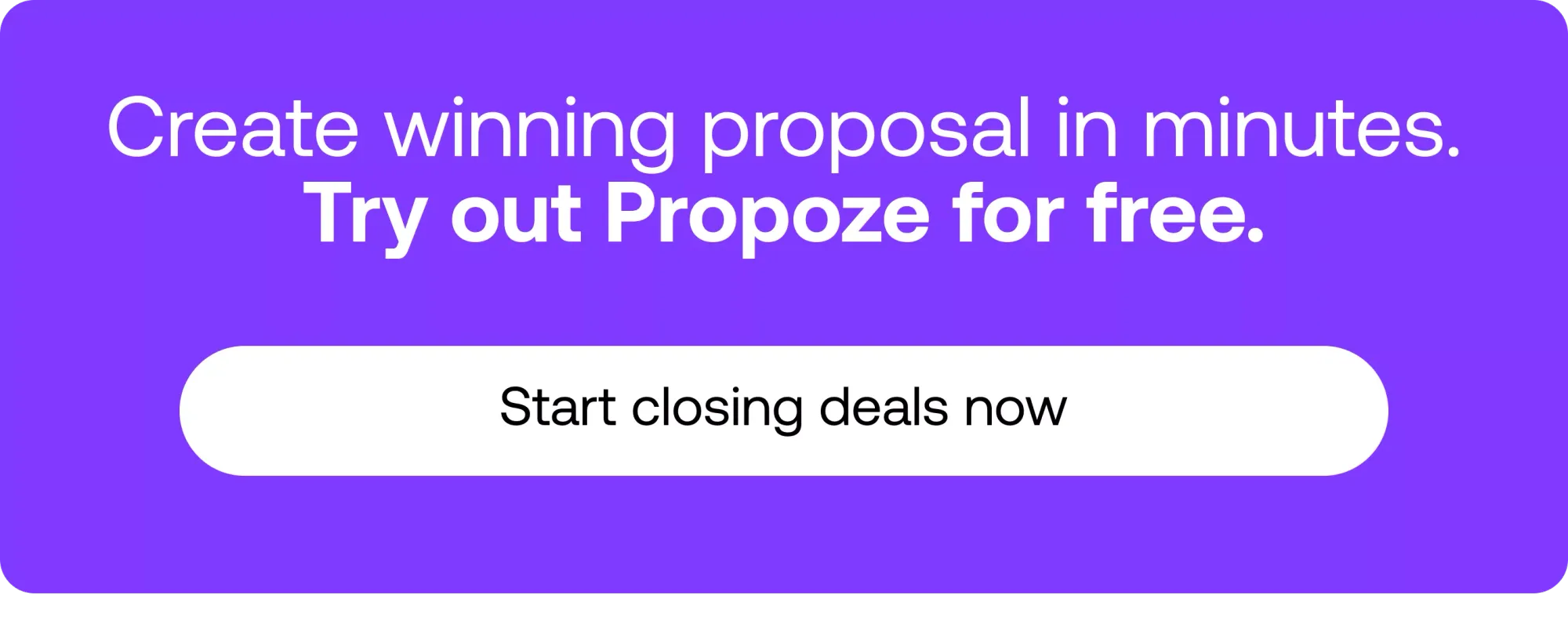
Cutting down mistakes and revisions with smart proposal tools
Integrated tools within proposal software help minimize errors and reduce the need for revisions:
- Automated content checks: The software can automatically check for errors, such as missing information or inconsistencies, before a proposal is sent out.
- Pre-built templates: Using standardized templates reduces the risk of leaving out crucial details, ensuring consistency across all proposals.
- Real-time updates: As changes are made, they are instantly reflected across all documents, preventing outdated information from being used.
These tools help ensure that proposals are accurate from the start, reducing the time spent on revisions and the risk of mistakes.
How proposal software boosts your sales results
To understand how proposal software affects your sales performance, it's important to track specific metrics. These metrics will help you see if the software is truly shortening your sales cycle and improving outcomes.
Essential metrics to measure faster sales cycles
- Sales cycle length: Measure the time from initial contact to closing a deal. A reduction in this time indicates the software’s effectiveness.
- Proposal conversion rate: Track the percentage of proposals that turn into closed deals. Higher conversion rates suggest that your proposals are more compelling and aligned with client needs.
- Time spent on proposals: Monitor how much time your team spends creating and sending proposals. A decrease in time spent while maintaining or increasing quality shows that the software is streamlining the process.
- Follow-up response time: Measure how quickly follow-ups are sent after a proposal is viewed. Faster response times can keep the sales process moving and demonstrate the efficiency gained from automation.
- Client engagement metrics: Track how clients interact with your proposals, such as the time spent on each section or the number of times a proposal is opened. High engagement often correlates with a higher likelihood of closing the deal.
These metrics provide clear indicators of how well your proposal software is working to reduce sales cycle length and improve overall sales performance.
And if you’re wondering how exactly can you measure your sales cycles, here’s a quick formula for you.
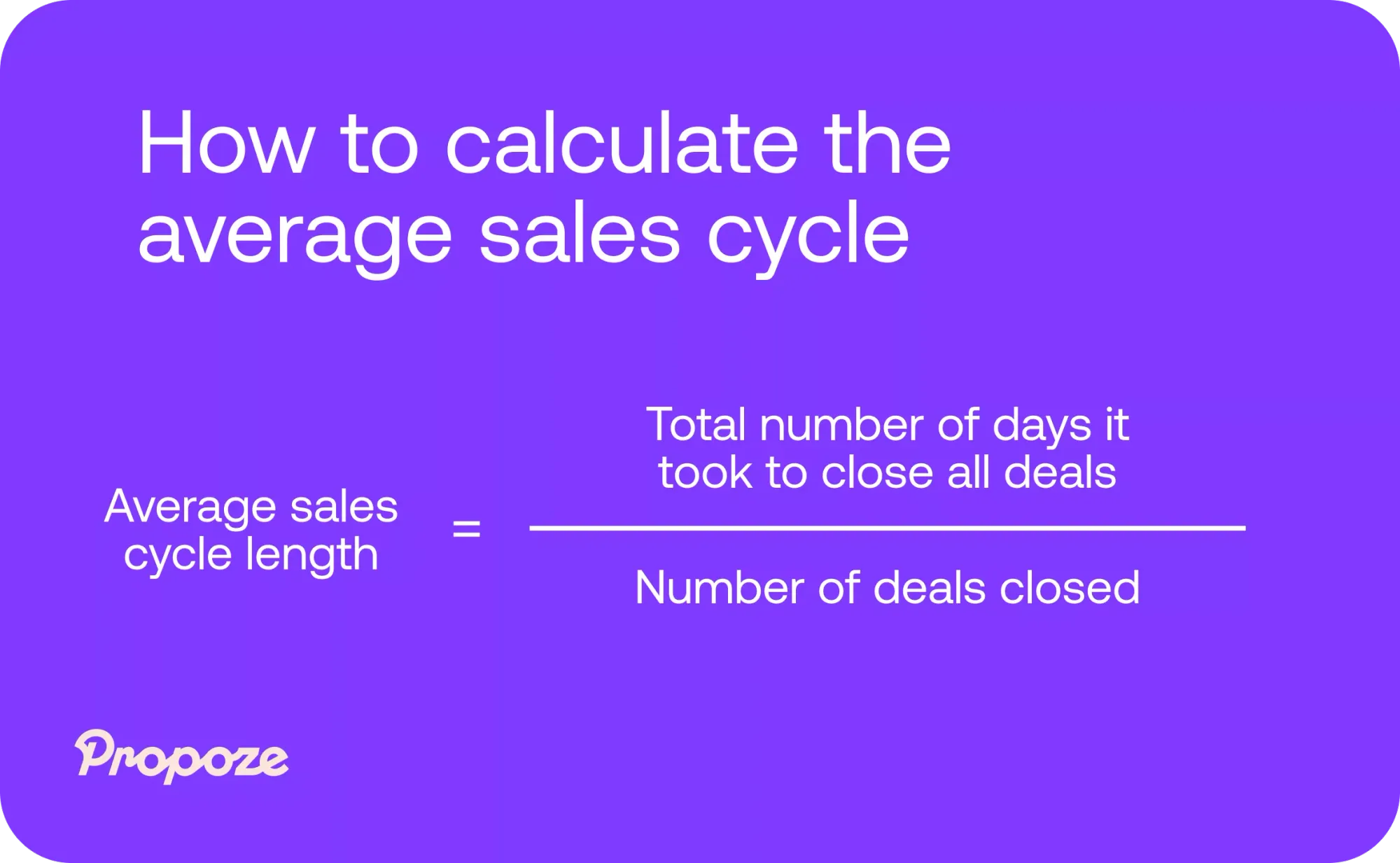
Ready to close your next deal?
We’ve gone through quite a bit of a guide and found out exactly how to reduce sales cycle length with proposal software. Of course, not every tool will have the features you need at the moment, so take time to carefully consider your next proposal tool.
Now, let’s do a quick recap of what we’ve gone through today. To shorten your sales cycle, you can:
- Automate repetitive tasks and speed up approvals to move deals forward faster.
- Use proposal tools to work together seamlessly in real-time, reducing errors and improving proposal quality.
- Use key metrics to track how your efforts are paying off, from conversion rates to client engagement.
And one final piece of advice. Stick to these areas if you’re serious about getting the most out of your proposals. Once you get all this down to a t, you’ll see a generous boost to your company’s sales.
Of course, if you need any help with your proposals, just let us know! We’re happy to help!
Finally, if you’re looking for proposal software that can help you achieve your sales goals, try out Propoze for free!